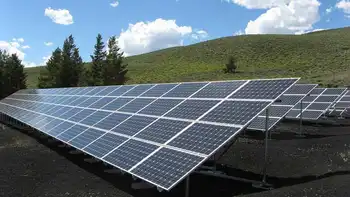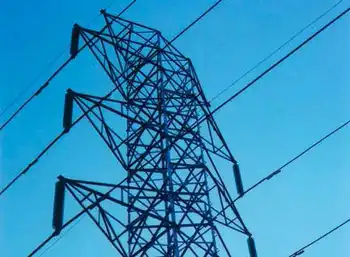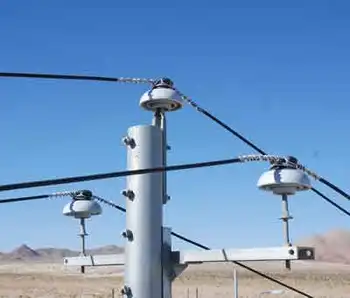PEI grid hit by ice storm
By The Guardian
CSA Z463 Electrical Maintenance -
Our customized live online or in‑person group training can be delivered to your staff at your location.

- Live Online
- 6 hours Instructor-led
- Group Training Available
Defence Minister Peter MacKay has assured Prince Edward Island that help is on standby.
Troops at CFB Gagetown in New Brunswick have been told that they could be called upon to provide help in the ice-covered province within hours.
“We stand at the ready. My last words to Premier (Robert) Ghiz were ‘I’m a phone call away’ and that phone call will put in play assistance immediately,’’ said MacKay.
Freezing rain started to fall across Prince Edward Island January 28.
As the freezing rain fell, it left layer after layer of thick ice on rooftops, trees and most damaging of all electricity lines. The weight of the ice caused power poles to snap like twigs, and in some places across the Island that caused the poles to fall like dominoes.
More than 100 poles are down.
At one point nearly 95 per cent of the province was without power. Maritime Electric was able to restore power to Charlottetown and most of eastern P.E.I.
The lights are also on in Summerside and in scattered communities across central P.E.I.
Still, a third of the Island is without power and with little chance of power being fully restored until February 2.
A wind warning had been posted for the province with wind gusts forecasted to reach 90 km/h. That wind, on an already ice-coated power supply, had the potential to cause even more destruction.
Kim Griffin, spokesperson with Maritime Electric, said she was “very, very concerned’’ about what high winds could do to the lines that remain standing.
“Weather has not been our friend the last two days,’’ she said.
Across the province people pitched in to help.
Ten emergency shelters were set up across the province, mostly in Prince County, to help provide shelter from the cold and a place to find food and water.
The Red Cross activated its emergency response team, and teams from Moncton and Saint John were dispatched to aid in the relief effort. The provinceÂ’s new Office of Public Safety went into emergency mode, opening its emergency response centre. Those teams will stay in place until the power is back on across the Island.
Still, Islanders, including Bernice Gauthier, were making the best of it. The 79-year-old North Rustico woman was warming soup on her propane stove to take the chill from her bones after going three days without power. She passed her time by reading and playing cards by candlelight.
“It could be worse,’’ she said.
While Islanders battled the cold inside, Maritime Electric battled the ice outside. Jeff Arsenault, a lineman with Maritime Electric, was breaking ice off a downed power pole near Hunter River.
“It’s been a long day, a lot more lugging and slugging,’’ said Arsenault, who will be working 16 hours a day until power is restored.
Maritime Electric crews werenÂ’t alone battling the ice.
Ron MacKinnon has worked with the Department of Transportation and Public Works for 11 years. This is the worst ice storm heÂ’s ever seen.
“We’re removing the trees that are leaning out over the road, they are a hazard to the public,’’ said MacKinnon, as he worked near New Glasgow.
Elizabeth Adams of New London spent part of her day at an emergency shelter community centre. Adams didnÂ’t have power either, but she has a generator.
While she was manning the emergency shelter, providing hot meals to cold Islanders, her husband was offering hot showers to their neighbours.











